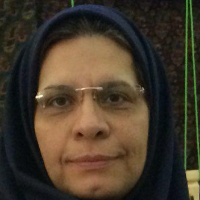Focalization and Knowledge Dissemination in the Story of “Khosrow and Shirin” in Shahnameh
Focalization is a way of communicating or acquiring knowledge (information) in narratives. Studying ways of focalization in narrative means understanding and analyzing how the narrator distributes information. In different scenes of the story, the narrator, depending on the reaction he expects from the reader, gives the reader more information, equal to or less than the characters in the story. If the reader's knowledge is more than personalities, the result is suspense and if the reader's knowledge is equal to the characters, his reaction to the events and actions of the story’s characters is curiosity. And if the reader knows less about the story's characters than about the events, he is surprised. The purpose of this study is to investigate the ways of information distribution in the Shahnameh narrative of Khosrow and Shirin's story. It tries to explain methods and techniques of information distribution in the story and its impact on the reader.
Gérard Genette was among the first narratology specialist that draw attention to the distinction between seeing and telling in the narrative and set the two factors of focalization and narrative against each other. By proposing this contrast, he attempted to avoid the common misconception of the two concepts of narrative mood and narrative voice where the former refers to focalization in narrative and the latter to narrative.Focalization is, in Genette's view, the view that things are inexplicably seen, understood, and evaluated and it is one way of expressing or acquiring knowledge through narration where two components are necessary: The Actor or Focalizator who, with his perception, directs the story, and Focalized (object), something or someone that the Focalizator sees. In other words, both the narrator and the characters give us information about the story world in different ways. Despite the narrator who speaks about his perception, emotion and ideology, the character does not say or give anything precisely, but actually feels it when he sees something or hears something about it. The narrator is the communicative voice we hear through him, the voice, the emotion, and the ideology of the character.Narration is the act of narrating and telling the story by the narrator and it is done when knowledge is unevenly distributed. There is no possibility for narration in a world where all viewers are complete and omniscient. Thus, examining the focalization practices in the narrative, means understanding and analyzing how the narrator distributes information. In Genette's opinion, narration can lack focus, depending on the narrator's presence in the narrative and the extent to which the narrator transfers information to the reader. Either it has an internal focus, that is, a person narrating a fixed or variable position or having an external focus.
The methodology of this study is based on text description and analysis based on the structuralist narrative views of Genett and Rimmon Kenan. The method of analysis is based on dividing the story into three sequences and explaining the focalization techniques in each sequence. In each sequence, the most influential and contributing factors in distributing consciousness to the story are described as it is not possible to mention all the changes in the narrator's perspective or other focalizer of the story, nor does it lead to significant differences in research findings.
One of the most important aspects of artistic beauty of Shahnameh is Ferdowsi's art of storytelling and narration techniques. Narrationon techniques are all techniques that lead to the creation of different narratives of a story, the sequence in which events actually occur and is understandable from the text, and this requires narration, meaning the action or process of creating a manuscript. Narration is a way to alternate knowledge or awareness and is a set of possibilities to provide and monitor our access to a changing field of information. Therefore, attention to narrative techniques, can explain how information is distributed and presented and the effect of the text on the reader.Studying Ferdowsi's narrative techniques and the way information and focalization are provided in Khosrow and Shirin's story shows that the most important method of creating diversity in the narrative is changing the narrator-focalizer’s point of view and the dominant aspect of focalization in the story is objective focalization by the narrator-focalizer. Except from the opening scene, the wise narrator-focalizer's perspective is limited to one or a few characters or a closed scenes from a specific location, and except from the end of "About the greatness of Khosrow", it provides the reader with information, equal to the characters.In the story, the number of internal focalization (narrative from the perspective of characters) is much less than external focalization and in most cases, the internal focalizer places one person in the focalized position, thus revealing the focalizing emotions relative to the focalizing. In this way, the reader’s information is equal to the personality-focalizer and the reaction of the reader is curiosity.The dominant aspect of the story's coherence in the deep structure of the work is the ideological aspect of the story's focalization. As the narrator arranges all the events of the text from the beginning to the end in line with his ideology, he encompasses all the sounds in the text as a function of his voice.The main worldview of the narrative is the world’s unreliability, which is emphasized by the ill-favored image of prosperous people and the contradictions in the story. The author's voice, where clearly heard and distinct from the narrator's voice, is another emphasis on the ideological aspects of the text, which on one hand emphasizes the inescapability of death to the narrator's worldview and, on the other, expresses the author's ideology whosees himself immortal through speech.
In this paper, the Shahnameh narrative of "Khosrow and Shirin" has been studies in terms of focalization methods in order to understand how knowledge is distributed in. The results of this study show that the wise narrator-focalizer narrows the scope of his information through the change of perspective and objective focalization and equates the reader with the character in term of information seeking. Therefore, in the entirety of the work, suspense is the most important factor in motivating the reader towards the text, which is created by the reader's pre-conscious awareness of the main character’s destiny and because of the equal awareness of the reader and the story's characters, and in the part of the narrative of the story, stimulating curiosity is the most important reason for reading the text.The dominant aspect of the story's coherence in the deep structure of the work is the ideological aspect of the story's focalizations, which is perfectly consistent with the direct narration and clear voice of the narrator in cases where he speaks directly to the reader. The main worldview of the narrative, besides the world’s unreliability, is the ideology of the national epic of Iran; An ideology that considers art and wisdom indispensable to the king and considers killing the king a disgrace. The author's voice, while clearly heard and distinct from the narrator's voice, emphasizes the ultimate ideology of the text and the unconditional excellence of art and speech over royal glory.
- حق عضویت دریافتی صرف حمایت از نشریات عضو و نگهداری، تکمیل و توسعه مگیران میشود.
- پرداخت حق اشتراک و دانلود مقالات اجازه بازنشر آن در سایر رسانههای چاپی و دیجیتال را به کاربر نمیدهد.



